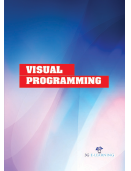Computer Science

In computing, a visual programming language (VPL) is any programming language that lets users create programs by manipulating program elements graphically rather than by specifying them textually. A VPL allows programming with visual expressions, spatial arrangements of text and graphic symbols, used either as elements of syntax or secondary notation. For example, many VPLs are based on the idea of "boxes and arrows", where boxes or other screen objects are treated as entities, connected by arrows, lines or arcs which represent relations. Microsoft Visual Programming Language (VPL) is an application development environment designed on a graphical data ow-based programming model. Rather than series of imperative commands sequentially executed, a data ow program is more like a series of workers on an assembly line, who do their assigned task as the materials arrive. As a result VPL is well suited to programming a variety of concurrent or distributed processing scenarios. VPLs may be further classi ed, according to the type and extent of visual expression used, into icon-based languages, form-based languages, and diagram languages. Visual programming environments provide graphical or iconic elements which can be manipulated by users in an interactive way according to some speci c spatial grammar for program construction.